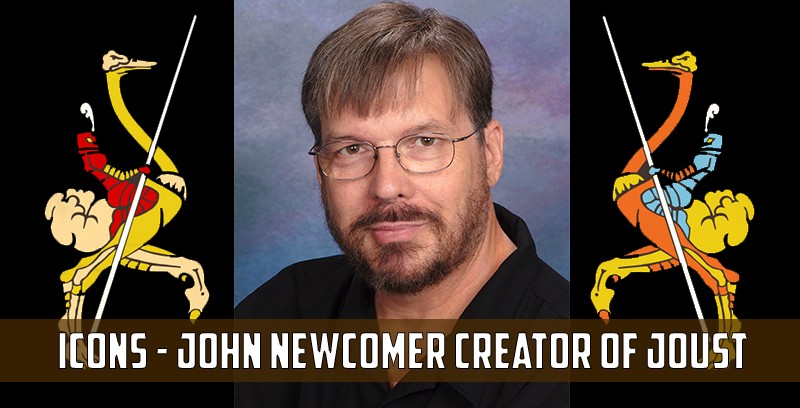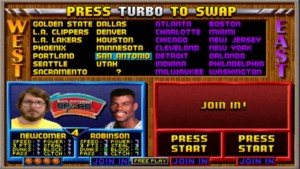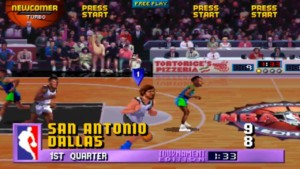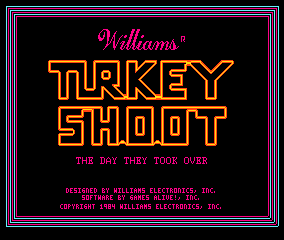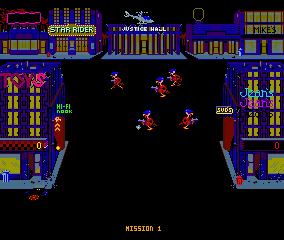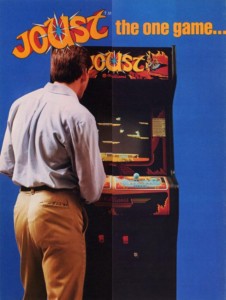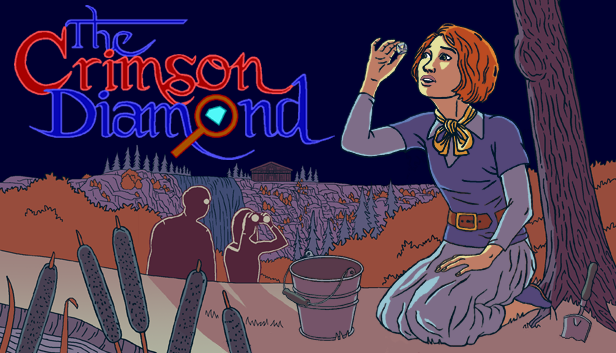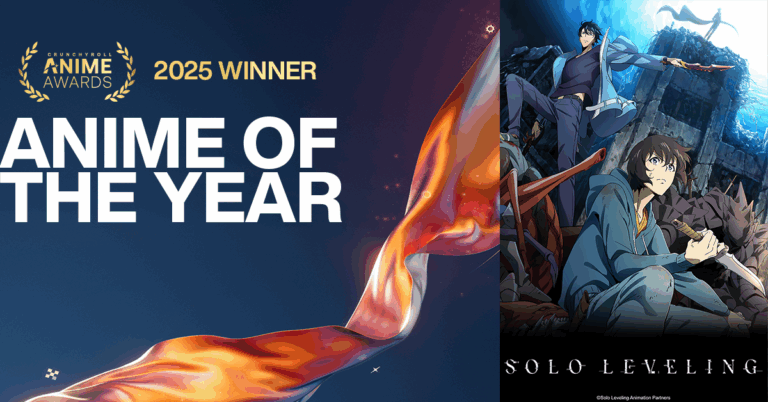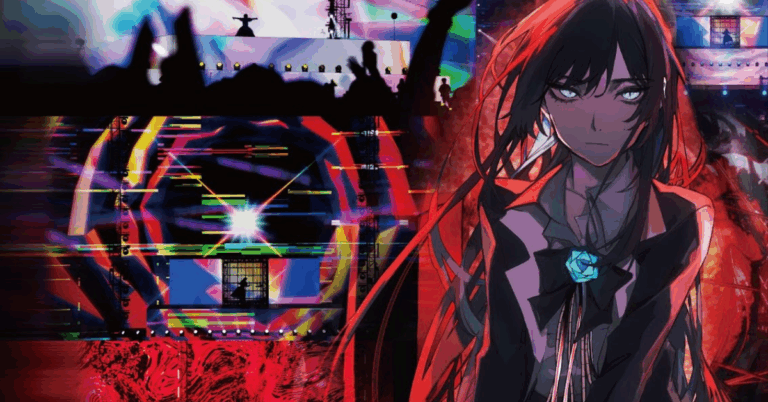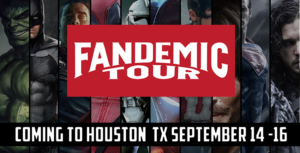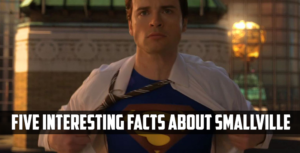In 1982, Williams Electronics released a new arcade game that featured two-player cooperative play. The premise was simple, the player would take control of a knight that rode a flying ostrich and fly around the screen defeating waves of enemies by colliding into them. This game was a hit for Williams Electronics, as it was well received in arcades and by critics alike. The game is known as Joust and if you have never played it, you need to get a copy of it and give it a try. This post however, is not so much about the game but about the designer that created the game.
Meet John Newcomer. He was the designer of this classic game. He has gone on to be involved with other classics such as Joust 2, NBA Jam, NARC, and more. I met Mr. Newcomer at the 2018 Classic Game Fest in Austin Texas and got to speak to him a little bit about creating Joust. I asked him if he was willing to do a feature with Temple of Geek to which he graciously accepted.

(Danniel Slade) Can you start off by telling me a little bit about yourself?
(John Newcomer) I am a career game designer and design manager. My background is in Industrial Design where I began as a toy and game inventor. I worked in Chicago which was not only a toy inventing hub, it was the hub of coin-op games in the early 80’s. I lived near one of the most important arcades in the country, Mother’s, where I learned everything I could about video games. I dissected the game strategy in each game and learned animation.
(DS) How did you get your start in the video game industry?
(JN) I was a toy and game inventor. My mentor was Gordon Barlow, the inventor of Mousetrap and well over 150 popular toys and games from the ‘60s and ‘70s. He helped me develop a discipline to quickly brainstorm a variety of ideas in every age group. I applied that technique on my first project when I started at Williams, and Joust emerged from that. I had an unusual skill set for the video game industry. I was (and still am) a designer and game strategist, not a programmer. When I arrived at Williams, I had worked on a variety of electronic toys, but never a coin-op video game.
(DS) What was the first game you worked on?
(JN) As a toy and game inventor I worked on many toy and game ideas (board, electric, electronic). My first coin-operated video game was Joust. My first task at Williams was to come up with a variety of rough ideas for management to review and programmers to choose to work on. Bill (Pfutz) Pfutzenreuter, a pinball programmer, chose my Joust concept to work on next as he transitioned to video. We became a team. He was the Lead Programmer and I was the Lead Designer and Team Leader.
(DS) How did you come up with the concept for Joust?
(JN) I wanted to make a flying game where the player could feel more connected to flying. I researched that most people dreamt of flying. Also, the #2 most desired superpower was the ability to fly. I was an enthusiastic reader of comic books, fantasy, myth, and an avid movie-goer. The references were everywhere. The temptation was to put wings on a humanoid, but it was better gameplay to put riders on birds and knock them off. Using a button to tap for each flap of the wings made the connection stronger.
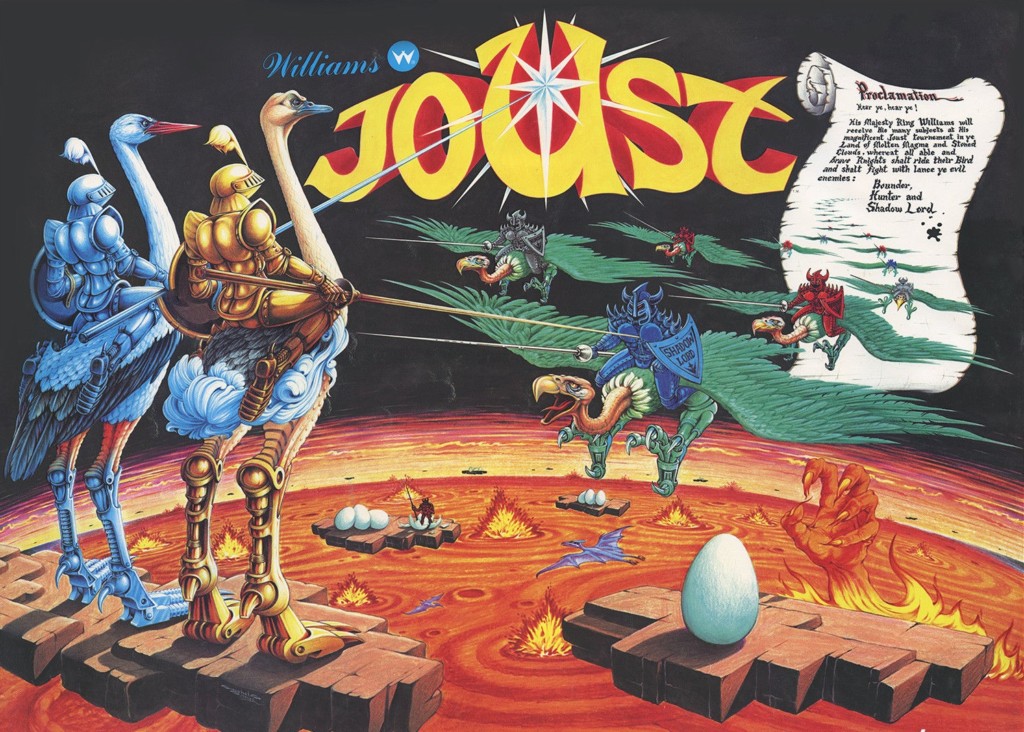
(DS) Why did you decide on an ostrich as the mount in the game?
(JN) I needed a bird that looked good on the land and the air. An ostrich looked best on the ground. I felt it was easy to imagine these birds were bred for combat and had enhanced wings so they could fly. And it is easy for one player to tell another they just played a game with ostriches, rather than some fantasy bird they might have trouble identifying.
(DS) Did you know instantly that the game would be a hit?
(JN) No. There were doubts in the company when non-team members finally started to see the game. People were pointing out it didn’t shoot, not a space sci-fi theme, unproven controls, and the graphics were not in a simple style as games like Robotron and Defender. I always kept my resolve as did Lead Programmer Bill (Pfutz) Pfutzenreuter, but it was impossible to know a game this unique would be a hit. I only knew it would be a hit when the game went on its first test at an arcade. The king player of the arcade stepped up to it first and played the game three times. He got slaughtered and was swearing at the game. He punched the game, showed his middle finger to it, then stormed out of the arcade. 30 minutes later he returned with two of his buddies. They played the game exclusively for a couple hours. That’s when I knew.
(DS) Ready Player One featured Joust as a main plot point in the book. How did it make you feel to know that your game was featured prominently in this story?
(JN) Awesome. It is an honor, a privilege, and surprise to have Joust resurface in this way after all these years.
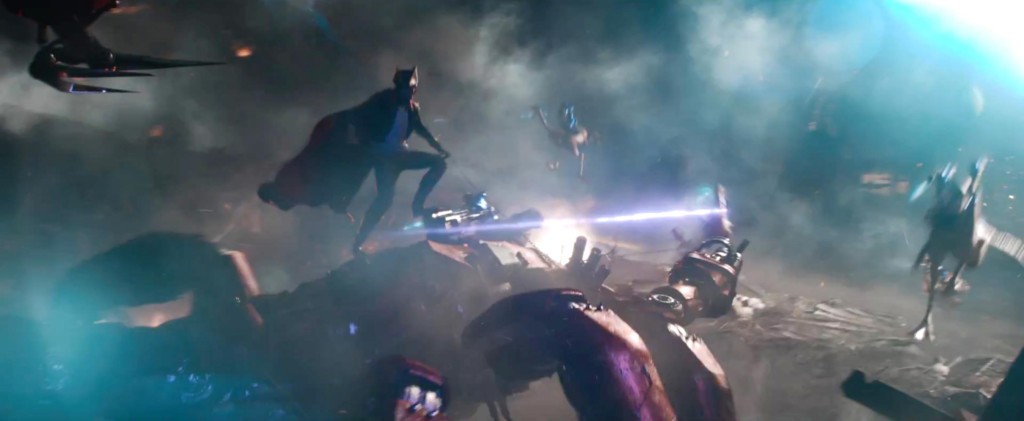
(DS) There are always stories of game developers partying with rock stars or hanging with celebs in the early days of gaming. Do you have a story you are willing to share?
(JN) I worked as an animator on Revolution X that featured Aerosmith. It was a lot of fun doing the digitizing shoot of the band members. It wasn’t a party, it was just everyone rolling up their sleeves, getting the job done, being themselves. Everyone in Aerosmith was cool and down to Earth. A couple of the guys were very interested in the technical side of how the digitizing process tuned into a game. I remember Steven Tyler being pretty quiet, but when it was his turn to get digitized animation of him singing and strutting with the mic, he absolutely took over the room with his charisma. I just thought “what an amazing guy with an awesome gift.” After Joe Perry was done with his shoot, I got to drive him back to his hotel. After he got out, I just sat in my car for a few minutes and said to myself, “That’s it…I’m going to do games forever.”
(DS) You were an animator for the game NBA Jam. Did you know that you were going to be a playable character in the game?
(JN) I am pretty sure it was Mark Turmell’s idea to put the heads in of everyone on the development team. I was not on the project at the end and didn’t know about it until they started digitizing everyone’s heads. It was a fun idea and I enjoy playing the game as myself alongside NBA superstars. When the public learned about this Easter Egg, everyone started getting calls at the office from players who tried to get names of people on the team, their gamer initials, and birthdays.
(DS) What is your favorite part of the creative process in developing the game?
(JN) Getting to where I can envision the whole game and play it in my head before production starts, and then watch/guide its evolution into something cooler during production.
(DS) You are currently still in the game industry. How different is it now then it was in the 80’s?
(JN) Now I am doing free to play (FTP). You have access to lots of detailed data to help make the game more fun, and to encourage players to want to spend money on the experience. You have to get more into the economy and business side of game design, and balance player experience with earning revenue. Actually, it is like the coin-op days on steroids, with access to more data.
(DS) You created the Samantha Swift series for MumboJumbo. What led you to creating a hidden object game for PC?
(JN) It was a company decision to make hidden object games. We made casual games and hidden object games were doing well on the online portals. I think we were one of the first to evolve hidden object with adventure games in both Samantha Swift and Midnight Mysteries.
(DS) Was there any game that you worked on that you were unsure if people would enjoy it?
(JN) Turkey Shoot. The shooting was fun, but the theme and graphics were cartoon-like with a strange theme.
(DS) The last I read, you were with Reliance Games as a Creative Director. What is that position like and how does that differ from where you started?
(JN) Actually, I left Reliance and am now a design consultant with Game Forest. In general, over the last 15 years I designed games as well as managed other designers. I tend to see life and the world as a design you shape, so I apply general design thinking when taking on any role at a company. When managing, you need to help others to see with more OCD eyes. You need to help guide careers. You need a deeper understanding of the business side of games.
(DS) Looking back on your career, what game would you say is the one game you are most proud of?
(JN) Joust. It was my first coin-op video game and it was unique. It did not use a reference game. “No one ever made a difference by being like someone else.” – P.T. Barnum
(DS) What would you say to someone who is wanting to break in to the game development industry today?
(JN) Don’t just play games. There is a world of pop culture and history you need to absorb. Watch people, watch movies, find creativity in all things, and learn the psychology of fun. Be true to your player, but don’t forget the publisher also needs to pay their rent too. Be fair to both.
(DS) Where do you see the game industry heading in the next 3 to 5 years?
(JN) Two paths. One is ever increasing tech that gets a player more and more immersed into feeling like part of a different world. The other is a more casual experience where tech and understanding of human psychology help players enjoy a more casual experience.
Joust designer John Newcomer is an independent game design consultant in Dallas, Texas. Look John up on LinkedIn.com for more information on him and his work. All answers were supplied by John Newcomer based on his recollections and opinions.

